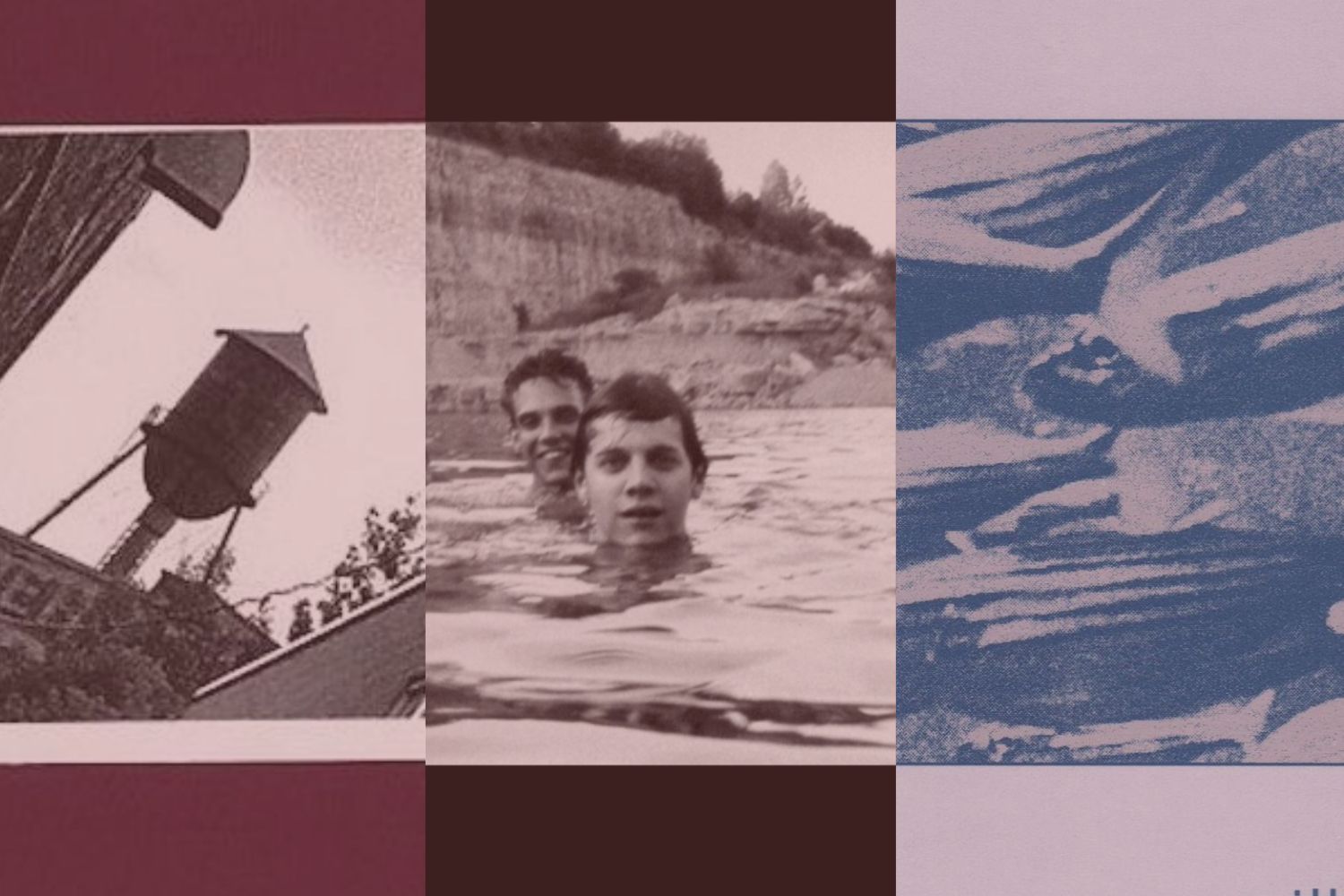In 1994, critic Simon Reynolds unintentionally coined an entire spectrum of music in a review of Bark Psychosis’ then-new album Hex, succinctly encapsulating the group’s moody and cerebral atmospherics as “post-rock.” And as these things often do, the name stuck, often to music that had little in common with each other. Post-rock is rhythmically intricate post-hardcore, and it’s also gorgeously arranged instrumental jazz-pop. It’s dramatic anthems that build to a soaring climax, and it’s also understated moments of abstract tranquility. It’s improvisational, it’s compositional, rarely resembling pop music—but not never.
Defining post-rock is perhaps the most complicated part of understanding it, a phrase that’s been crowdsourced and studied, loved and loathed in equal measure. It implies the next stage in an evolution, and that’s true in a sense—what most post-rock artists share in common is a tendency to look past the conventional songwriting tropes of rock music, as well as its approach to instrumentation and arrangements. Sometimes post-rock sounds like rock (Explosions in the Sky), sometimes it doesn’t (Tortoise), but it often favors studio experimentation, is informed by electronic and jazz music as much as progressive icons like Can and King Crimson, and offers something that often seems to aim for the cerebral and the emotional all at once.
As the name itself turns 30, we assembled a list of its greatest moments since its earliest progenitors began to play with and pull apart rock music’s forms. And in doing so, we approached it from all angles, from the vibrant experimentation in the UK in the early ’90s to the vibrant collaborations in Chicago later that decade, on to the rise of post-metal. Complicated and oblique a term as it is, it covers a vast spread, and we cover as much as we can in our list of the 50 Best Post-Rock Albums.
Note: When you buy something through our affiliate links, Treble receives a commission. All albums we cover are chosen by our editors and contributors.
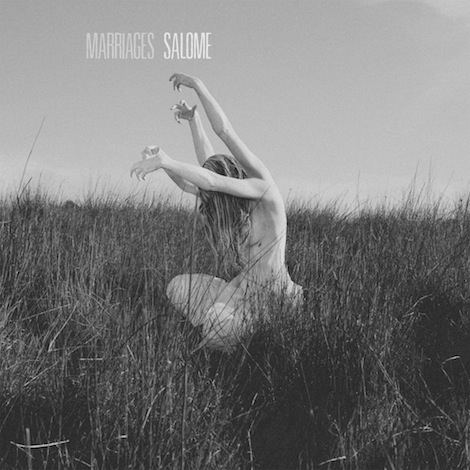
50. Marriages – Salome (2015)
Marrying dusky atmosphere with a ’90s-alternative songwriting sensibility, Marriages’ sole album is a classic that flew under the radar. Emma Ruth Rundle’s yearning voice was used more like an instrument to create an emotional sonic layer to the brooding bass and hypnotic chord progressions, and its abstract riffing provided a sprawling sea of sound for Rundle to moan her angst into. The vulnerable nature of the group’s songwriting kept the album from getting mired down in proggy pretense, setting a high bar that Rundle’s own solo songwriting would match in the years to follow. – Wil Lewellyn
Listen/Buy: Bandcamp
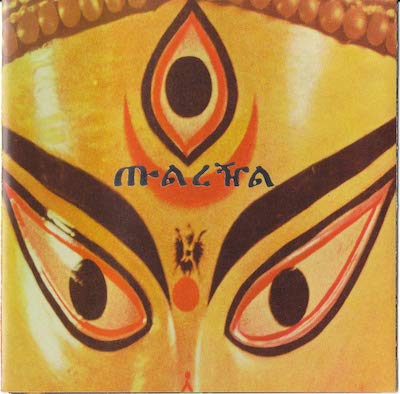
49. Macha – Macha (1998)
Incorporating the influence of gamelan and traditional Indonesian and Nepalese instruments in the context of a rock band setup, Macha took shape after Josh McKay (later of Deerhunter) and Kai Reidl took several overseas trips to Indonesia to immerse themselves in the music. Their debut album still often scans as rock of the most deeply psychedelic kind, but there’s a brilliantly invigorating fusion at play that bridges groove with expanded tonalities and intricately unconventional arrangements. Like Sun City Girls before them and Horse Lords after them, Macha sought inspiration and vibration from far-off latitudes in pursuit of a heady rewrite of psychedelic rock. – Jeff Terich
Listen: YouTube
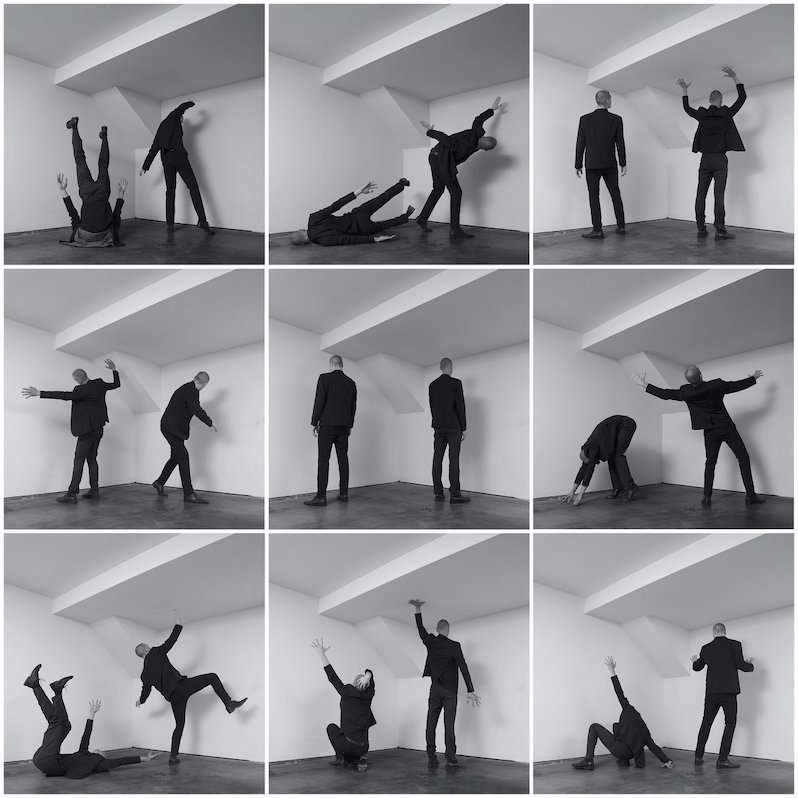
48. Sprain – The Lamb As Effigy (2023)
Sprain’s debut album As Lost Through Collision was an excellent hybrid of noise rock and slowcore that nonetheless couldn’t have prepared most listeners for the sprawling avant garde opus of its follow-up, The Lamb As Effigy Or Three Hundred And Fifty XOXOXOS For A Spark Union With My Darling Divine. A 90-plus-minute double album merging more urgent and concise bursts of noise-rock with experimental noise and wildly ambitious, shape-shifting, side-long compositions, the album feels almost too huge and complex for casual listening. Yet that’s exactly what it calls for, in order to unlock its myriad layers and wrap one’s head around its various intricacies, the reward being one of the most breathtakingly confrontational listens in years. Just a month after releasing the album and performing it exactly once, Sprain called it quits. Which makes sense in a way; when you’ve crafted an album of such ornate agony and abstraction, where do you go next? – Jeff Terich
Listen/Buy: Bandcamp | Amazon (vinyl)
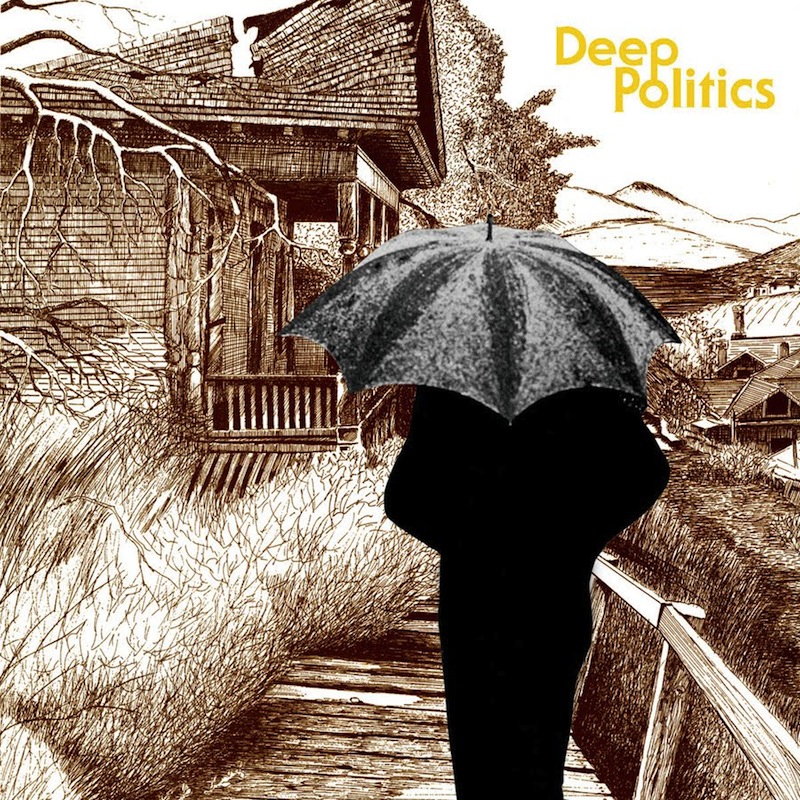
47. Grails – Deep Politics (2011)
Portland, Oregon’s Grails pair a sense of bombastic grandeur with intricately arranged psychedelia and a penchant for global influences, which speak to a prog-rock influence as much as one in the cinematic scope of an artist like Ennio Morricone. Deep Politics, the group’s sixth album, finds the group arriving upon the most masterful balance of widescreen vision and compositional intricacy, its instrumental makeup of strings, piano, electronics and other various elements drawing it even farther away from rock, even while it retains a heaviness and urgency on standout moments like the opener “Future Primitive” and a gripping emotionalism on the breathtaking title track. – Jeff Terich
Listen/Buy: Bandcamp | Amazon (vinyl)
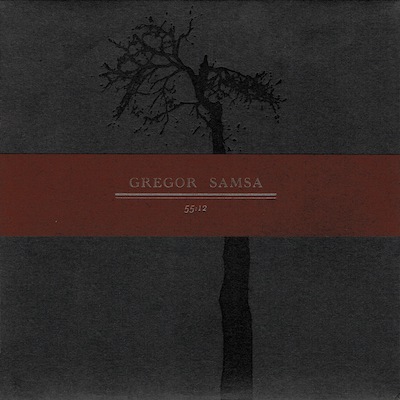
46. Gregor Samsa – 55:12 (2006)
A shifting, sprawling collective that’s counted more than a dozen members over the duration of their career—including two members of avant garde metal group Kayo Dot—Richmond, Virginia’s Gregor Samsa opted not for explosive crescendoes but gradual, lingering melancholy. Their debut album 55:12, which is exactly double the length of their 27:36 EP, dwells in eerie darkness, negative space and unnamed dread, evoking artists such as Low or the bleakest Songs: Ohia recordings as often as post-rock heavyweights like Mogwai. It’s devastating music that draws beauty from the sadness it dwells in rather than in an attempt to escape it. – Jeff Terich
Listen: YouTube

45. Planning for Burial – Below the House (2015)
The music that Thom Wasluck makes as Planning for Burial is caught between extremes. It’s graceful, slow, even enchanting in its unique way; it’s also crushing, heavy, dense and overwhelming. In the sphere of heavy music, Below the House might immediately register as metal, but a closer inspection would suggest there’s more to it than that: gauzy synthesizers, dreamy slowcore guitar drift, gentle metallic twinkles, and lots of introspective, heavy emotion. It’s in a song like “Dull Knife, Pt. II,” extending beyond 11 minutes, where Wasluck is at his most powerful—stark, patient and brooding, and building toward a gradual and glorious climax. – Jeff Terich
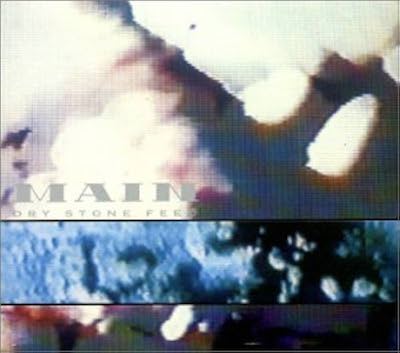
44. Main – Dry Stone Feed (1993)
Formed by Robert Hampson and Scott Dowson of UK shoegaze group Loop, Main held fast to that group’s penchant for thick walls of distortion, but employed them to fascinatingly different effect. The key elements of the group’s Dry Stone Feed EP might be the same as those on an album like A Gilded Eternity, but the end product is less firm in its structure—less, well, rock. Dry Stone Feed is a walking paradox of a record, ambient music made by loud guitars, and yet there’s a certain logic that holds it all together. Its pieces subtly shift over the course their duration, made more dramatic through headphones, in which the world they build seems to change once you step inside it—delivering on the promise of a psychedelic musical experience. – Jeff Terich
Listen: Spotify
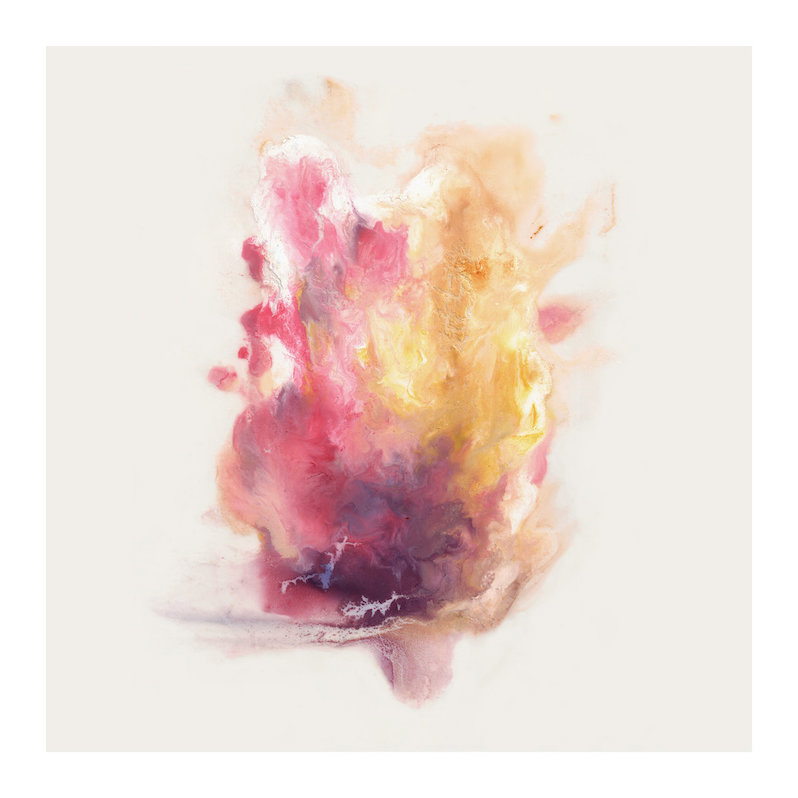
43. Big|Brave – A Gaze Among Them (2019)
So intense and physical is the sound of Big|Brave’s monochordal sound that the band have likened the vibrations from their amps to a full-body massage. Though they’ve since strayed from their early intent of creating overwhelming sound through minimalist composition, A Gaze Among Them saw them achieving the most rewarding and rich material from that underlying concept. From a certain angle these five epic songs very nearly resemble pop music, amplified, intensified and engineered to overwhelm the senses, but there’s a discipline that anchors them, delivering their most dynamic works through the least moves possible on stunning tracks like “Muted Shifting of Space” and “Holding Pattern.” “Less is more” has never been so accurate. – Jeff Terich
Read More: Big|Brave’s All Encompassing Catharsis
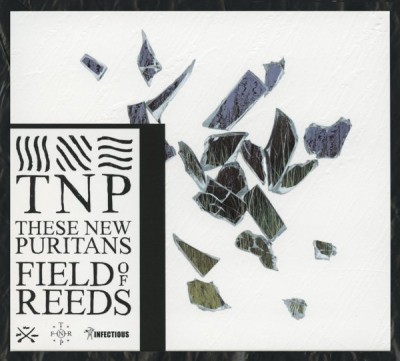
42. These New Puritans – Field of Reeds (2013)
These New Puritans underwent a curious evolution in their first seven years, not unlike that of post-rock innovators Talk Talk, but through somewhat more abrasive territory, first through prickly and oblique post-punk, subsequently as ominous post-industrialists, and eventually in the form of art rock visionaries with delicate orchestrations. Field of Reeds barely resembles the Essex group’s first two albums, built on slow-rolling shadows of melodies and evocative textures. For that matter, it’s curiously beautiful, revealing itself in gently building compositions that often feel as if they were written for the sake of modern classical performance or interpretations of ECM Records-style jazz rather than, ostensibly, an indie rock record, and moments like the choral arrangements of “Spiral” or the Steve-Reich-goes-pop sound of “Organ Eternal” bear that out to a certain degree. But they’ve likewise never topped a piece of songwriting like “Fragment Two,” in which stark repetitions of piano slowly pick up one additional element after another—drums, bass, vocals, horns—until finally arriving as an understated and outsized piece of contemporary avant pop composition. – Jeff Terich
Listen/Buy: Spotify | Amazon (vinyl)
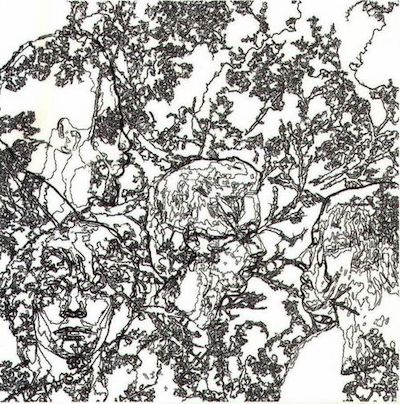
41. 90 Day Men – To: Everybody (2002)
The members of Chicago’s 90 Day Men might be better known for the projects they embarked on after the group’s split—Brian Case for his work in FACS and Disappears, Robert Aiki Aubrey Lowe for his work scoring films like Candyman—but their brief time together yielded some of the most fascinating sounds in early ’00s underground rock. Sitting between the more explicit Slint-isms of their debut and the psychedelic soul direction of 2004’s Panda Park is To: Everybody, their gorgeously refined second album, full of gracefully tumbling arpeggios, lush arrangements and subliminal groove. A missing link between post-punk and chamber pop, To: Everybody is graceful, emotional and cerebral all at once, accessible in spite of its ornate inscrutability. – Jeff Terich
Listen/Buy: Bandcamp | Amazon (vinyl)
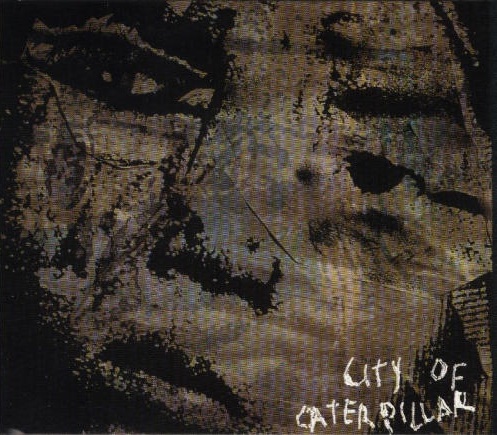
40. City of Caterpillar – City of Caterpillar (2002)
It’s easy to glance over City of Caterpillar’s post-rock pedigree due to their status in screamo circles, but let that not diminish how their contributions forged an inseparability between the two wherein screamo’s urgency became the conclusion to post-rock crescendos. This framework is commonplace now, but it was novel and unconventional in 2002 when City of Caterpillar was released, mostly due to the wide valley between the two genres. The crossbreeding fostered an atmosphere both tense and intimate, despite its lengthy tracks, due to screamo’s latent ability to catastrophize the minute. It was grimy, uncomfortable, and dour in a manner post-rock had never been before. – Colin Dempsey
Listen/Buy: Bandcamp
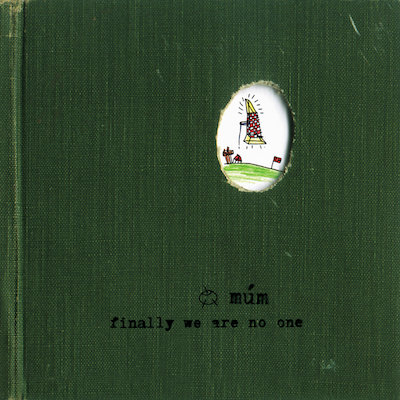
39. Múm – Finally We Are No One (2002)
Icelandic group Múm first made their mark with glitchy, electronic lap-pop before fully committing to maximal full-band arrangements, which congealed into a more richly rewarding set of pieces on sophomore album Finally We Are No One. And yet they didn’t abandon the bleeping bit-pop and micro-chopped IDM-isms either, the bubbling, bristling sounds of digital noise seeping in between their epic soundscapes and lush compositions. Finally We Are No One is playful and imaginative, romantic and sometimes childlike, in awe of the wonder that surrounds it even if viewed through a lo-res screen. – Jeff Terich
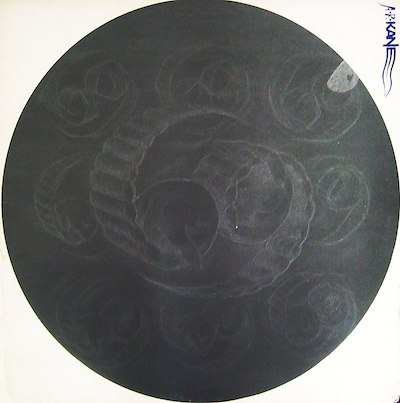
38. A.R. Kane – 69 (1988)
I’d long known A.R. Kane as part of the collaborative project M/A/R/R/S who released the sampledelic chestnut “Pump up the Volume” on the 4AD label, so to realize that those sounds came from this crew before 69? Fascinating and jarring. 69 is drenched in feedback, echo, and unvarnished vocals, giving structure and volume to 1960s psychedelics in ways that would eventually inform future visions both pastoral and harsh. The duo presage everything from the Elephant 6 collective in “Crazy Blue” to baggy dreampop in “Baby Milk Snatcher,” and then to JAMC-like overlaps of both in “Sulliday” and more. With distinct forms immediately visible in the formlessness, with so much promise and potential within the unknown, it’s a sonic Big Bang at the center of the post-rock universe. – Adam Blyweiss
Listen: Spotify
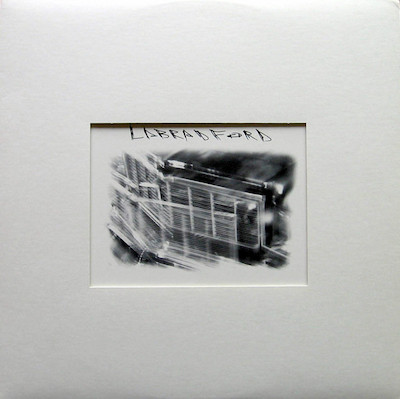
37. Labradford – Labradford (1996)
Formed in 1991, Richmond’s Labradford helped define the sound of influential indie label Kranky through their darkly textural drone-heavy post-rock sound, the likes of which bridges the expanse between Godspeed You! Black Emperor’s epic, cinematic compositions and the gothic chill of The Cure’s Seventeen Seconds. A strong argument could be made for any of the band’s albums—all recorded within one or two years of each other—to stand as representative here, their output remarkably consistent during their six-album, eight-year run. Their self-titled record is a perfect encapsulation of what they do, however, a hauntingly graceful album of ghostly incantations and after-midnight hymns, the soundtrack to seeing your breath turn to vapor and spotting a bare, eerie light in the distance. – Jeff Terich
Listen/Buy: Bandcamp
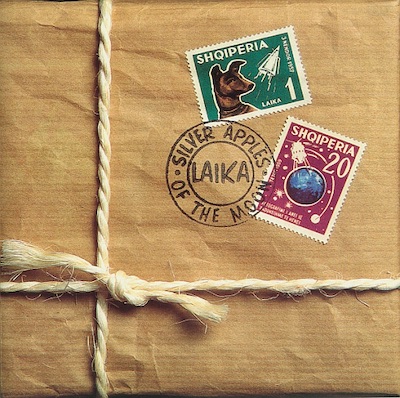
36. Laika – Silver Apples of the Moon (1994)
Laika arrived around the start of electronica’s big beat era, but their drum dropouts, odd time signatures, and Margaret Fiedler’s post-punk half-singing made their first LP something more complex than that particular norm. Yet it wasn’t just the core trio of Fiedler, Guy Fixsen, and bassist John Frenett doing the work here. Percussionist Lou Ciccotelli fleshed out the band’s cacophonous rhythms (“Thomas,” “If You Miss”), forcing them to have more in common with, say, Lightning Bolt, or at least Radiohead of the then-near future sped up and blown out. And Louise Elliot’s flute and sax contributed Afro-Latino complexities (“Marimba Song”) and free-jazz madness (“Let Me Sleep”). It takes a lot of gumption and nerd cred to swipe the name of your debut pop album from one of the world’s most important electronic and classical compositions. But when you can simultaneously pull off trip-hop that isn’t and jazz that isn’t, it ain’t just bragging. – Adam Blyweiss
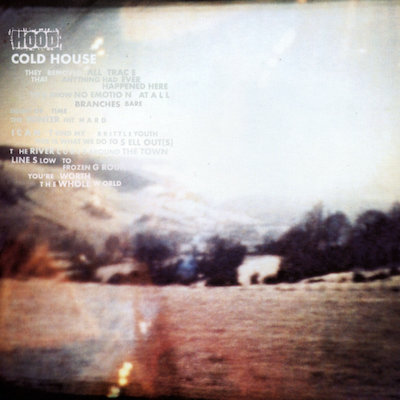
35. Hood – Cold House (2001)
Hood began life as a scrappy noise-pop group with a debut album released via lo-fi powerhouse Slumberland, but over the next seven years, their tempo slowed, their textures softened and their sonic realm seemed to expand 100-fold. The group’s fifth album Cold House was the result of a long period of growth and evolution, but it still feels like a complete transformation, elegant balladry juxtaposed against glitchy beats and occasional guest spitting from Anticon emcees. Cold House is akin to their peers in Bark Psychosis getting a Y2K firmware update without entirely wiping out the bug, a picture of serenity interspersed with little moments of technical malfunction. -Jeff Terich
Listen/Buy: Bandcamp
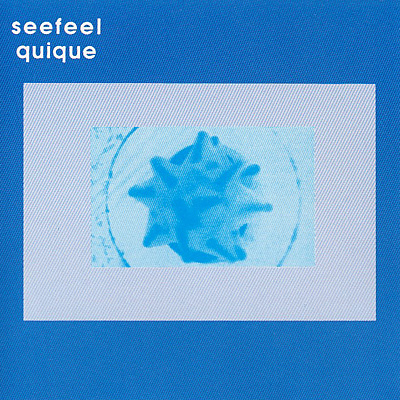
34. Seefeel – Quique (1993)
When John Peel puts you on UK radio before a label does and when Aphex Twin says he doesn’t want to fuck around too much when remixing your music, maybe you’re doing something right. This London group started with traditional band instruments and contexts but reconstructed and deconstructed them with studio technology, and the legendary results from their first full LP slot three ways. There’s vaguely industrial work like the droning melodies and echoing metallic percussion in “Polyfusion” and “Industrious.” There are arrangements that feel like unresolved house-music climaxes never leading to drops (“Imperial,” “Plainsong”). And there’s pure ambience and Sarah Peacock’s spacious vocals powering the rest of Quique beyond the New Age mean. It’s an album full of runout grooves from 45 releases spun at 33, sharing a lot of psychic common ground broadly with Krautrock and specifically with Oval’s microsampling Systemisch to come the following year. – Adam Blyweiss
Listen: Spotify
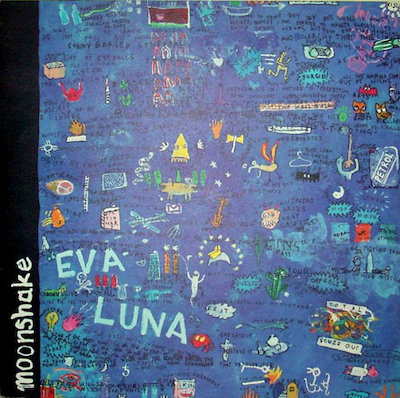
33. Moonshake – Eva Luna (1992)
Cock your head a little and view it at just the right angle, and Eva Luna just might scan as a pop record. Which it arguably is, as much as or perhaps even more so than any other record on this list, but Moonshake’s debut album reaches that destination through curious means. Dubby basslines intersect with shoegaze guitars, early trip-hop beat experiments, samples of obscure ’60s psych records, hypnotic loops and otherworldly psychedelia. It’s less a grab bag of genre exercises than a curious fusion of seemingly all of them at once, floating through space-age bass noir in “Bleach and Salt Water,” tumbling through uneasy psychedelic waters in “Little Thing” and finding hooks in unlikely places in “City Poison.” – Jeff Terich
Listen/Buy: Spotify | Rough Trade (vinyl)
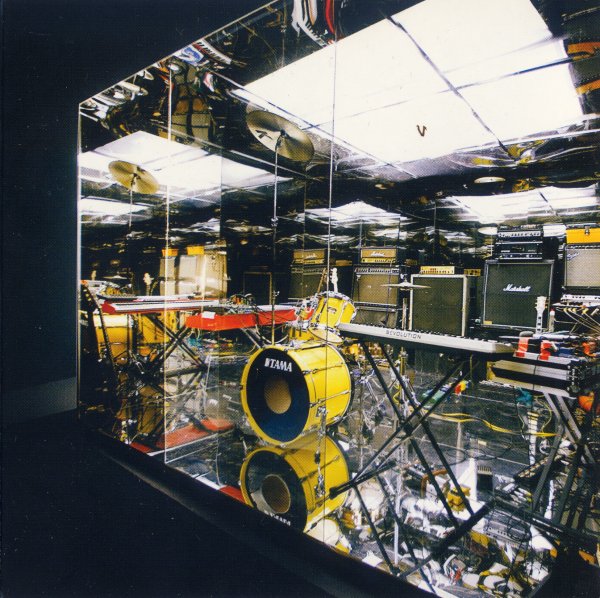
32. Battles – Mirrored (2007)
Surrounded as they were by bands labeled indie rock, indie-dance, or both, this experimental-rock supergroup couldn’t escape those pigeonholes of bookers or media for millennials and Gen Z. Fortunately, Battles and their first proper LP had music able to lean into both. Tyondai Braxton’s manipulated vocals gave even their most dour lyrics a chipper stage-musical feel, John Stanier’s chops on drums—previously put to use in Helmet—brought clipped urgency, and the strings of Dave Konopka and Don Caballero’s Ian Williams couldn’t help but be bright and energetic. If all we got out of this album were the grooves of “Atlas” and “Tonto” (in original and remixed form) to stand alongside the LCD Soundsystems and Polyphonic Sprees of the world, that might have been enough. But regardless of post-, math-, prog-, or any other hyphenate, the rock of Mirrored and the band provided so much more. – Adam Blyweiss
Listen/Buy: Bandcamp
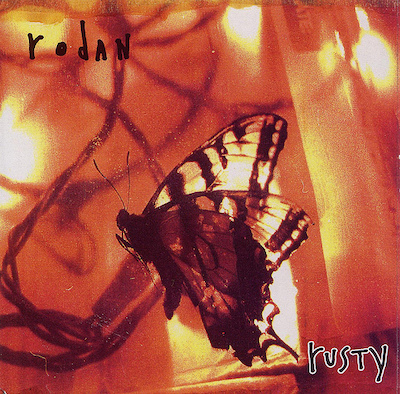
31. Rodan – Rusty (1994)
Formed in the same Louisville, Kentucky scene as the legendary Slint, Rodan took a similarly graceful yet intense approach as their famous peers, though they often leaned even heavier into manic bursts of post-hardcore chaos. The under-three-minute “Shiner,” juxtaposed with the gorgeously chiming opener “Bible Silver Corner,” stands out as a particularly nasty piece of snarling punk. As such, Rodan covered more space between these two poles than perhaps any other band to be called post-rock, and generally without straying from the raw punch of their guitar-bass-drums-vocals approach. Rhythmically taut but always yearning toward true beauty, Rusty is a uniquely polarized album, capable of seething violence and gentle grace alike. – Jeff Terich
Listen/Buy: Bandcamp
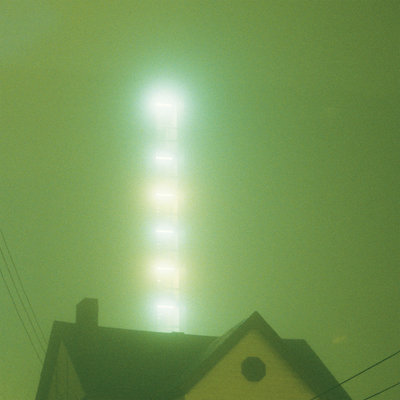
30. Don Caballero – What Burns Never Returns (1998)
The liner notes of Don Caballero’s second album stated that “Don Caballero is rock not jazz. Don Caballero is free of solos.” Which, by their own measure at least, might render this entry at worst incorrect or at best debatable. But the Pittsburgh group, synonymous with “math rock” during their 18-some-odd-year run, made little use of verse, chorus or lighter-lifting coda. At once more exploratory than their wild and frantic first two albums as well as one that’s more nuanced, What Burns Never Returns found the group crafting intricately arranged instrumentals with a wider array of textures courtesy of Ian Williams’ pedalboard, and with a sense of mesmerizing, slow-burn focus that didn’t so much capture a kinder, gentler Don Caballero, but one seeking transcendence in less of a hurry. – Jeff Terich
Listen/Buy: Bandcamp
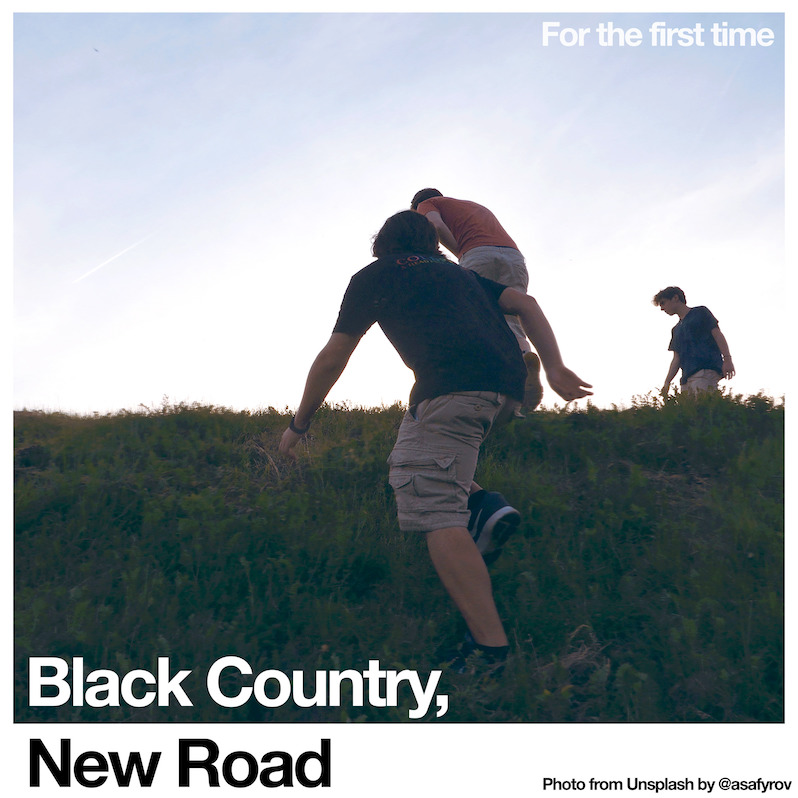
29. Black Country, New Road – For the first time (2021)
Nestled inside the cargo short pockets adorning For the first time’s cover is a self-awareness that post-rock isn’t commonly associated with, but one that Black Country, New Road had to develop lest they be swallowed by comparisons and expectations. All their singles before their debut album’s release garnered acclaim, so, whether it was for self-preservation or subversion, they coped with humor. They winked at the comments about Slint fetishism (even though, fundamentally, the two groups are quite different), toned down their pre-release singles to revel in messy diary-like revelations, and branched out into Klezmer. How, in a stone-faced style like post-rock, was that to be possible? An answer would never come because Black Country, New Road have been forging ahead since, leaving this album as their post-punk, free jazz, and folk-indebted interpretation of post-rock. – Colin Dempsey
Listen/Buy: Bandcamp | Turntable Lab (vinyl)
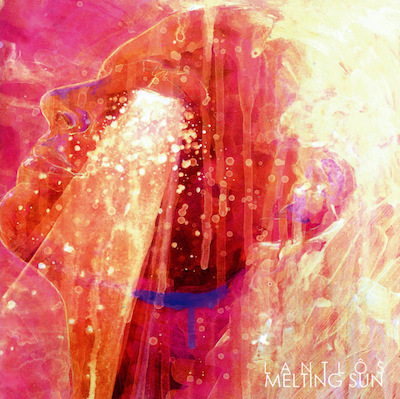
28. Lantlôs – Melting Sun (2014)
In dropping black metal, Lantlôs discovered the center of their sound. I must have listened to this album over a hundred times since its release; it is one of the precious few albums that sounds just like its cover, a record that finds the natural heaviness of the sunrise rather than the sunset, letting a euphoric catharsis, even a desire for euphoria, to overwhelm the heart. It is beautiful, almost entirely in major key, bright and glorious, but feels sodden with tears of relief. I’ve spent years trying to articular the beauty of this record, one which soothes pain in a way that induces more tears than things indulging in it. – Langdon Hickman
Listen/Buy: Bandcamp | Amazon (vinyl)
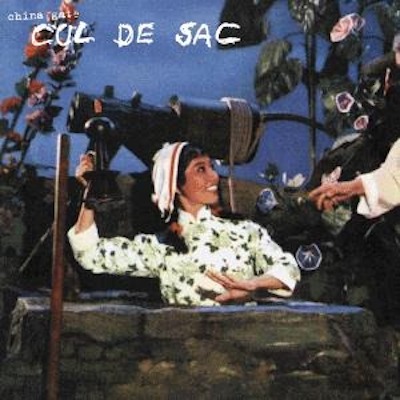
27. Cul de Sac – China Gate (1996)
Cul de Sac guitarist Glenn Jones expressed some misgivings about the term “post-rock,” a discomfort justified in large part by the fact that very few other bands that existed during their tenure shared much aesthetic similarity with them. Channeling the cosmic mysticism of Sun Ra and the improvisational explorations of krautrock pioneers Can through surf-guitar-laden psychedelia, the group’s third record China Gate is a singular experience that aims for emotional climax as much as compositional intricacy. Ambition and accessibility aren’t at odds here, however, with a melodic groove underpinning even the wildest excursions, like the noisy launch sequence of “Doldrums” or the slow-building, nine-minute sprawl of “Nepenthe.” Categorical terms are perhaps a matter of perspective, but nearly three decades after its release, China Gate still feels like a journey without precedent. – Jeff Terich
Listen/Buy: Spotify
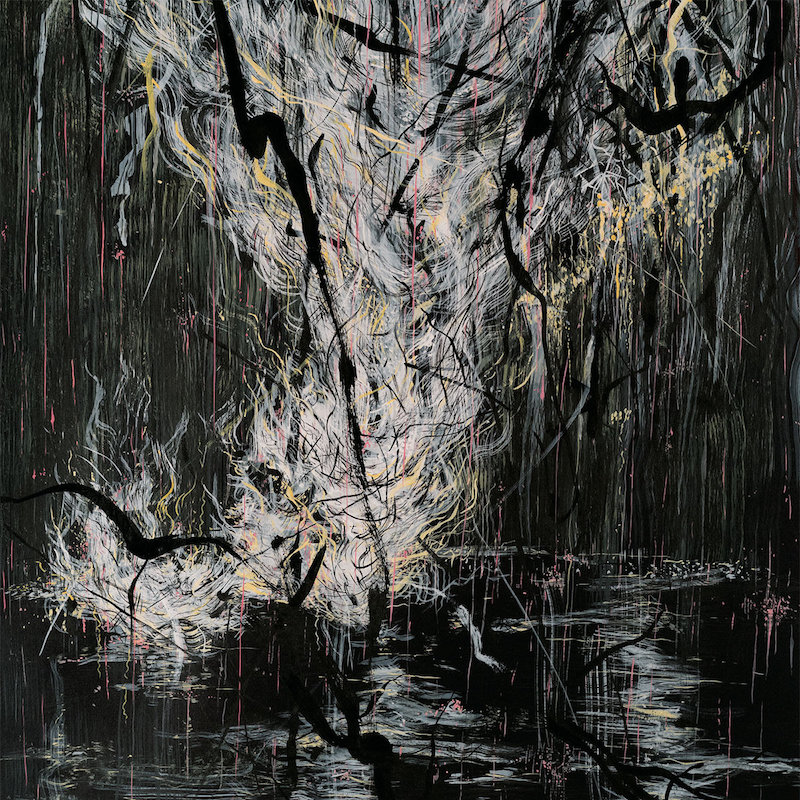
26. Sumac – Love in Shadow (2018)
On their third full-length album, Love in Shadow, post-metal trio Sumac sought to deliver a representation of the “more spiritual and vulnerable” aspects of love that are elided from popular ballads that frequently become maudlin and sexually boastful. They did this by recording four tracks whose more downbeat moments of vulnerability were made more powerful by their sparsity relative to the guttural vocals and pummeling sludge that surrounded them. Whilst the album leaned more heavily on the “metal” than the “post” side of Sumac’s style, their innovative post-rock guitar stylings could be heard during the more tender moments of tracks like “The Task” and “Ecstasy of Unbecoming.” – Greg Hyde
Listen/Buy: Bandcamp | Amazon (vinyl)
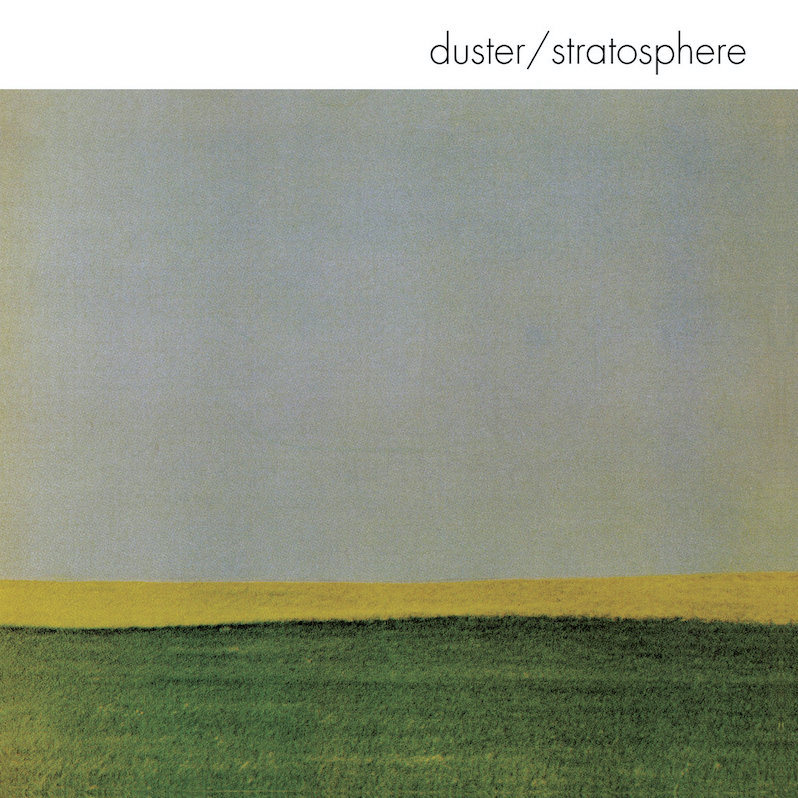
25. Duster – Stratosphere (1998)
You know what? God bless TikTok. What a few years ago was a brilliant undersung slowcore group, a genre which blended the proto-post-rock elements of the alternative rock and emo worlds with a bit of dour country-folk, suddenly exploded, garnering over 200 million streams on one song from this record alone. They underscore the more melodic and song-driven wing of what post-rock can do, especially with vocal arrangements. Importantly, it feels vast and empty like its cover, cinching itself to post-rock not just by its drone-rock approach but that imagistic and emotional directionality, a sparrow in the desert. – Langdon Hickman
Listen/Buy: Bandcamp | Turntable Lab (vinyl)
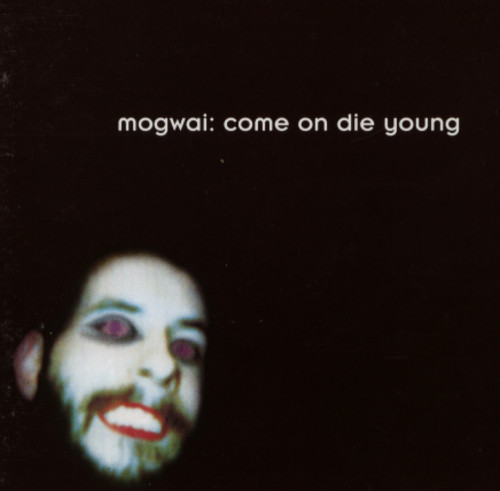
24. Mogwai – Come On Die Young (1999)
In 1999 if you were growing out of punk rock and into psychedelic drugs, this album was likely your soundtrack. For a band that claims to have never really taken many drugs, the Scottish band was amazingly capable of translating what being high sounds feels like and translating it to sound. The lingering guitar chords weep with the depression of dopamine depletion. The use of samples paints the perfect narrative for the album. It is emotionally heavier than most metal albums, despite the delicate jangle of guitar that permeates the songs. – Wil Lewellyn
Listen/Buy: Bandcamp | Amazon (vinyl)
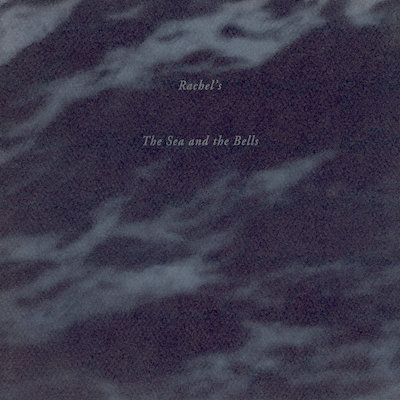
23. Rachel’s – The Sea and the Bells (1996)
A trio comprising pianist Rachel Grimes, violinist Christian Frederickson and bassist/organist Jason Noble, formerly of Rodan, Rachel’s had very little to do with rock, despite at least one member’s past. Though instrumentally more like a chamber trio, the group embarked on hauntingly moving journeys through their melodic narratives, which followed the rhythm of the sea on their third album The Sea and the Bells. Stark, beautiful and eerie, the album opens with majesty and before long descends into what feels like a ghost story. In fact it happens all within the first song, “Rhine & Courtesan,” which comes to an unsettling stop halfway through, rife with creaky sound effects, before ultimately taking on a more ominous tone. – Jeff Terich
Listen/Buy: Bandcamp
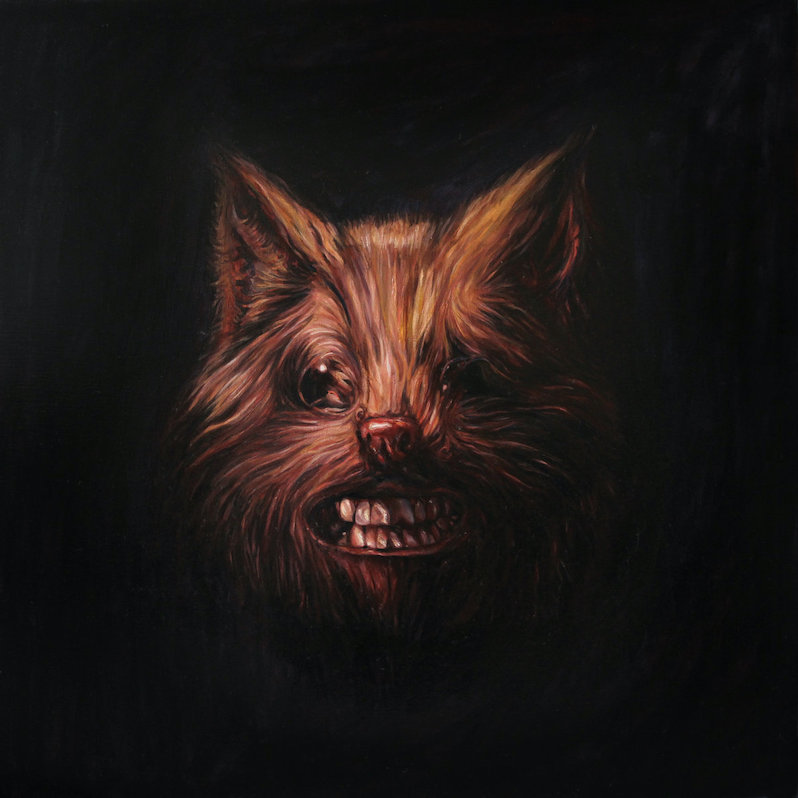
22. Swans – The Seer
Expanding on the gothic post-industrial droning folk rock of their pre-hiatus material and the doomed country vibes of Angels of Light, The Seer saw the band seize up a ritualistic heft and swagger latent to the material, allowing the lengthy live improvisations and elaborations on the material finally make it on to record. It’s no wonder that the four records following this one followed a similar format, nor that it was this record and not the previous merely quite good record that saw them rocket up in estimation among critics for their modern work again. Gira is… a contentious figure, to put it mildly, and cautious googling of him is encouraged, but the fruits of his bands he has assembled are strongly attested to in this ferocious material. – Langdon Hickman
Listen/Buy: Bandcamp | Amazon (vinyl)
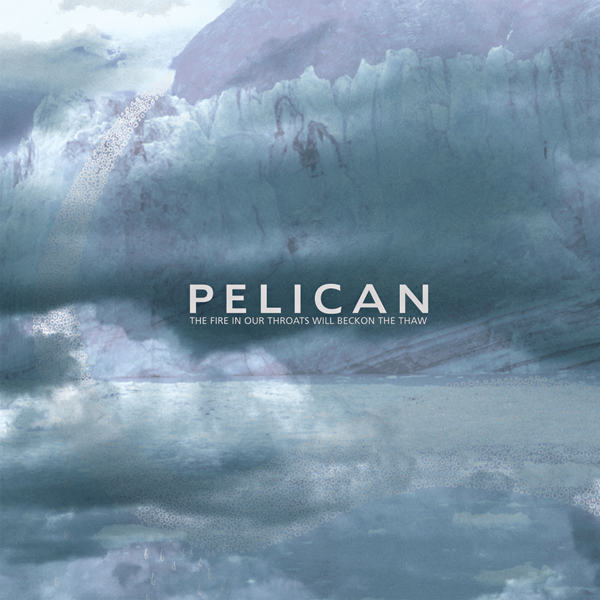
21. Pelican – The Fire In Our Throats Will Beckon the Thaw (2005)
While “post-metal” as a term itself hasn’t existed for nearly as long as post-rock, as a distinctive direction within heavy music, its origins go back nearly as far, with artists like Godflesh and Old beginning to carve out experimental spaces against a more thunderous backdrop. By the mid-2000s, bands like Pelican took that idea farther into evocative and emotional spaces while retaining the intensity and power of heavy metal itself. Pelican’s sophomore album The Fire In Our Throats Will Beckon the Thaw captures a spectrum of feeling and achieves transcendent climaxes without vocals and, for that matter, without much in the way of rote metal tropes of any kind. Yet even in the album’s most concise moments, Pelican are always aiming toward the heroic. – Jeff Terich
Listen/Buy: Bandcamp | Amazon (vinyl)
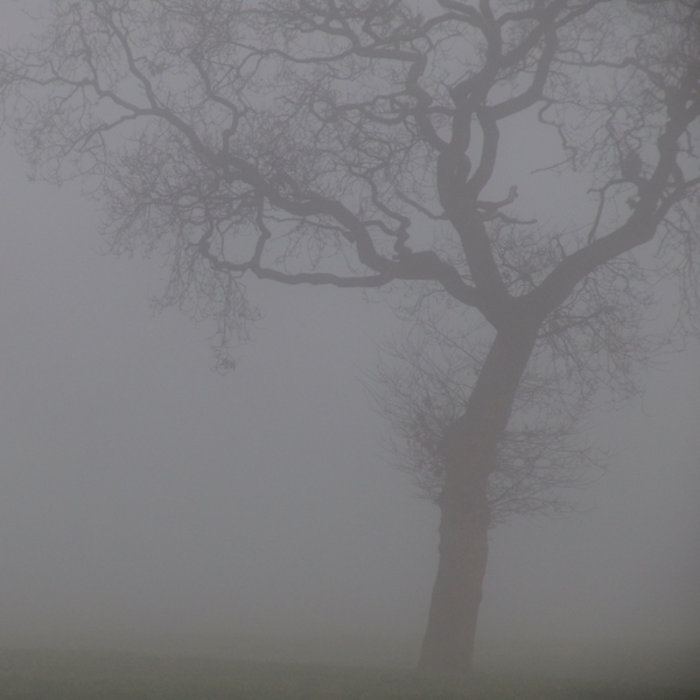
20. Jesu – Silver (2006)
On their 2006 EP Silver, Jesu’s Justin Broadrick leads a journey to the crossroads where shoegaze and post-rock meet. With an atmosphere as thick as fog rolling over the sea at night, his vocals are a haunting murmur under the surface of the water. The four songs all vary at times, even building to a more metallic intensity on “Star,” but the overall haze it creates makes this the project’s strongest work, as melodies lure you deeper into its murk. The swirl of guitar effects drowns your mind in their astral chiming with only the faint patter of programmed drums anchoring you to your body—how many other albums can claim to have that effect? – Wil Lewellyn
Listen/Buy: Bandcamp
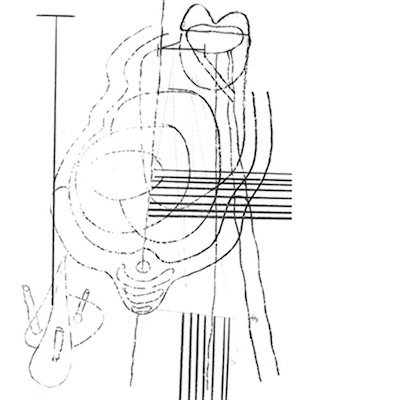
19. Gastr Del Sol – Camofleur (1998)
David Grubbs and Jim O’ Rourke, the two musicians and composers at the center of Chicago group Gastr Del Sol, have left an indelible imprint on the history of indie music—the former having played in cult post-hardcore groups like Bastro and Squirrel Bait, the latter recording with Wilco and Stereolab and having briefly been a member of Sonic Youth. None of which actually tells you much about the pristine beauty of their final album together, Camofleur. Following three albums of wildly eclectic composition with a strong grounding in American primitivist guitar, the duo embraced a more lushly atmospheric approach for their swan song, drawing from the luxurious orchestrations of Pet Sounds and Burt Bacharach as much as their contemporaries and collaborators in Tortoise. The spindly, frantic energy of leadoff track “The Seasons Reverse” almost seems like a red herring once the album progresses to the gentle ballad “Mouth Canyon” or the underwater drone phase of “A Puff of Dew.” It’s music for quiet contemplation and watching the sunset on your back porch, and taking a deep inhale of the outside air at dusk. – Jeff Terich
Listen/Buy: Bandcamp
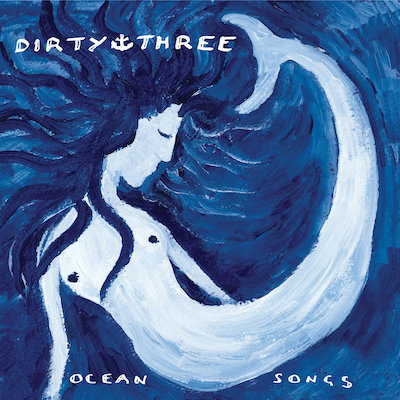
18. Dirty Three – Ocean Songs (1998)
The members of Dirty Three have spent nearly as much time in the past 30 years collaborating with other artists as they have as a self-contained trio. Violinist Warren Ellis has been a longtime member of Nick Cave & the Bad Seeds, while guitarist Mick Turner and Jim White have worked with artists such as Cat Power and Bonnie “Prince” Billy. Yet the chemistry they have together is singular and unorthodox, crafting sometimes hushed, often majestic instrumentals via a simple and sparse instrumental set-up. A loosely sea-based concept album, Ocean Songs is a powerful statement that ebbs and flows like the ocean itself, with crashing climaxes and moments of stately calm. Where opener “Sirena” flows with a kind of fractured beauty, moments like the ten-minute sprawl of “Authentic Celestial Music” make the most of the power they wield together, reaching for the devastating and cinematic with an orchestra of three. – Jeff Terich
Listen/Buy: Bandcamp | Amazon (vinyl)
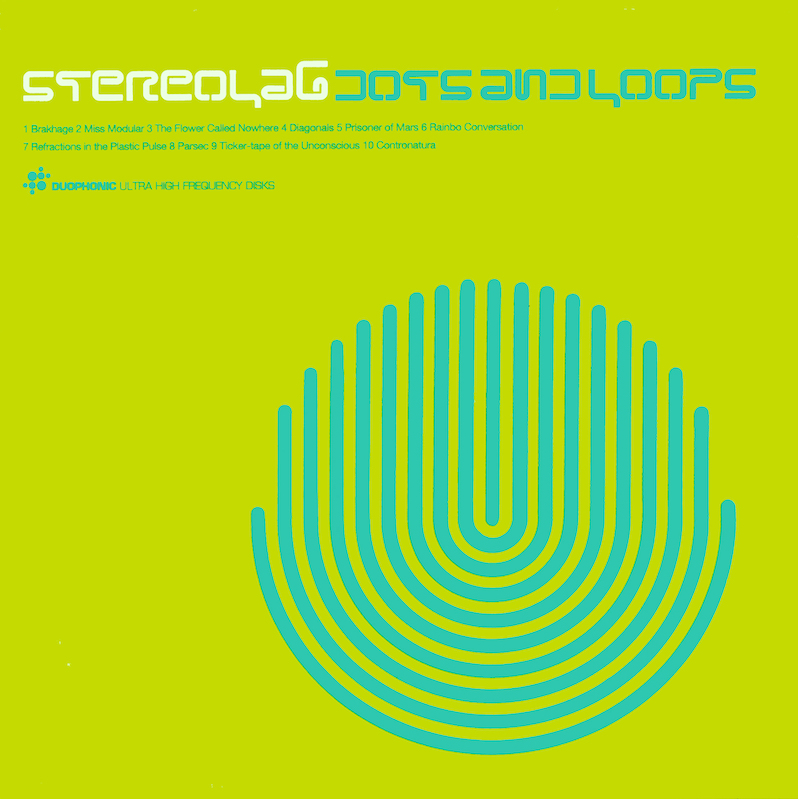
17. Stereolab – Dots and Loops (1997)
Stereolab’s connections to post-rock are myriad and well documented, though the question of whether or not that’s actually what they play has never been an easy one to answer. They spent much of their career on a major label and wrote pop songs—pop songs with one-note drones and lyrics rooted in Marxist politics, but still. Dots and Loops, however, is another story. Recorded with Tortoise’s John McEntire and featuring contributions from German IDM architects Mouse on Mars, it weaves in and out of styles with effortless, breezy ease, juxtaposing cool midcentury lounge-pop with immersive arrangements and complex rhythmic patterns. They even crib a page from their collaborators, situating a 17-minute long suite of shifting musical ideas on side three, not unlike Tortoise’s own sidelong masterpiece, “DJed.” Dots and Loops is also still a pop album at heart—a strange, unconventional, complex and visionary pop album but still. – Jeff Terich
Read More: 10 Albums to Hear If You Like Stereolab’s Dots and Loops
Listen/Buy: Bandcamp | Turntable Lab (vinyl)
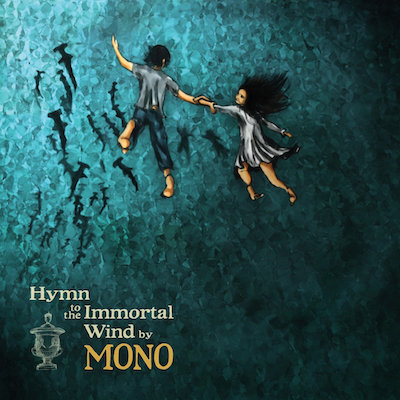
16. Mono – Hymn to the Immortal Wind (2009)
You will never feel smaller than when you listen to Hymn to the Immortal Wind. It personifies post-rock’s formula of crescendos crashing into overwrought distortion while texture and timbre clamor for attention. The Japanese group’s fifth album makes the most of Steve Albini’s production because, sweet lord, does everything sound heavy and strike like an anvil nearly to the point of parody. One could clown on “Ashes in the Snow” and “Burial at Sea” for pulling the exact same trick back-to-back and nearly begging you to feel anything. The thing is, these only work because Hymn to the Immortal Wind does that with such a pristine quality, and unabashedly so, that it’s the quintessential post-rock album for anyone who wants to know where the genre culminated in the aughts. – Colin Dempsey
Listen/Buy: Bandcamp | Amazon (vinyl)
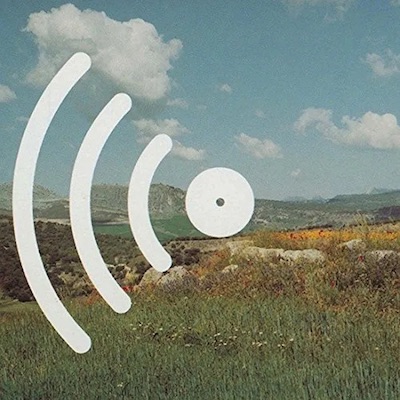
15. Disco Inferno – D.I. Go Pop (1994)
Essex’s Disco Inferno were pop deconstructionists, dismantling the basic elements of rock music and reconfiguring them into shapes that more or less resembled a basic pop song, but never quite in the way you remember it sounding. So when the band released an album titled D.I. Go Pop, they didn’t submit to the rules of pop tradition so much as bending and breaking it to their will. Heavily comprising a plunderphonic approach to samples amid dense and gauzy melodies, D.I. Go Pop is intoxicating in its artful irreverence. Splashes and droplets introduce leadoff track “In Sharky Water.” Screeching tires undercut fuzzed-out bass in “A Crash At Every Speed.” And “Footprints In Snow” uses its title sound effect as percussion. These would all be merely clever gimmicks if they didn’t bleed beautifully into the music itself, creating a hazy fog of blurred delights. – Jeff Terich
Listen: Spotify
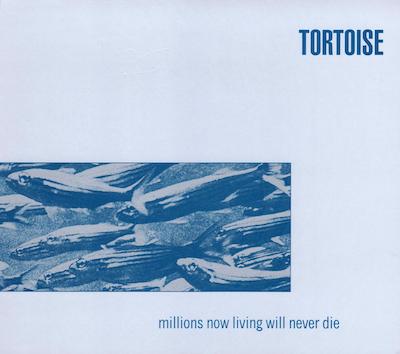
14. Tortoise – Millions Now Living Will Never Die (2006)
Introducing the opposite of a sophomore slump. The entertaining but insular noodling of the Chicago band’s self-titled debut expanded here on album #2 to include elements rarely heard in any post-rock to this point, namely fun and joy. The 21-minute opener “Djed” is a mini-album unto itself, tying together loose threads of organ funk, rock rhythm sections, and electronic-driven improvisation. It’s backed up by more discrete ambient experiments (“Dear Grandma and Grandpa”) alternating with pillowy guitar-and-mallet-percussion rock. The latter includes the sprightly “The Taut and Tame,” which might be just this side of a hit single/anthem for the post-rock genre. Millions Now Living Will Never Die positioned Tortoise somewhere between jazz ensemble and jam band, a streak of musical color amid so many shades of gray. – Adam Blyweiss
Listen/Buy: Bandcamp | Amazon (vinyl)

13. Isis – Panopticon (2004)
Isis was, for years, synonymous with a specific brand of sludge metal driven by slow-burning, Slint-like instrumentals and apocalyptic climaxes, which along with their contemporaries and influences in Neurosis, led to “NeurIsis” becoming shorthand for that very sound. They perfected the form on 2004’s Panopticon, their most graceful and accessible album alike, offering moments of pristine beauty on songs like “Backlit,” a song whose introductory arpeggios carry a stillness typically reserved for the likes of The Album Leaf. But it’s in the contrast between quiet elegance and incendiary eruptions where Panopticon triumphs, showcasing that some of the most powerful metal music can also be that which exercises the most restraint. – Jeff Terich
Listen/Buy: Bandcamp

12. Sigur Rós – ( ) (2002)
During the Satanic Panic of the ’80s, it was believed that “the Devil” or one of his customer service agents could be summoned by playing metal records backward. This was, disappointingly, not true. However, playing Sigur Rós’ third album forward does summon the fey who inhabit the magic lands of Iceland. The falsetto invocations captured on this album are the sound of those fairies talking back in real-time to you. Humans do not possess the power to create sounds that can melt your heart like what is heard in only the first two songs here. If you make it further into the album the dynamic crescendos will take you to the place in between this dimension we refer to as reality and the place where the machine elves reside. Through the mystical compositions of ( ), neither the lyrics nor the music hail from the vibrational frequency we call reality. – Wil Lewellyn
Listen/Buy: Bandcamp | Amazon (vinyl)
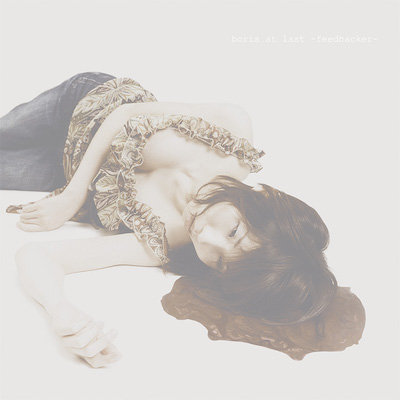
11. Boris – At Last -Feedbacker–
Throughout their career, Japanese metal titans Boris have recorded a number of album-length suites, such as 2000’s Flood, an album that reveals its patient beauty gradually in four lengthy movements, much of it entirely instrumental. Structured similarly but arguably more accessible—and with an even more climactic second half—is 2003’s At Last -Feedbacker-, which finds the trio building from hazy sheets of guitar that feel almost like dispatches from the David Lynch universe into a louder, more crushing peak and eventually total noise annihilation. It’s best experienced without distractions, on a good set of speakers or headphones, without distractions. In a sense, it feels like the polar opposite of one of their more metal-oriented albums like NO—where that record sounds great under any circumstance and requires essentially no preparation, At Last -Feedbacker– is more of an art piece, one with an awesome power and a subtle gentleness contained in one continuous melody. – Jeff Terich
Read More: A Beginner’s Guide to Boris
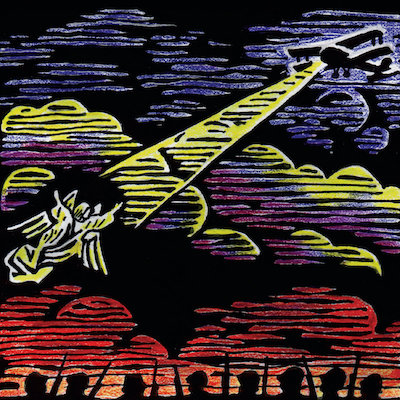
10. Explosions in the Sky – Those Who Tell the Truth Shall Die, Those Who Tell the Truth Shall Live Forever (2001)
The line between post-rock and emo is a blurry one when it exists at all. Take, for instance, this record, which shares in its opening track the name of a contemporary quite brilliant emo group. Often we tend to consider post-rock as “crescendocore,” especially in retrospect, but this flippant designation ignores the emotional cathartic core of what made this style of music so eruptive in those peak years of its interest. This is a record that moves like a country record, easing the blade through the gaps in the arm, slicing your belly with beauty. Listen to its gentle swooning melodies and try not to hum a phantom slide guitar part in your head, to dream of open and agonized midwest skies absent of the necessary rain. – Langdon Hickman
Read More: An interview with Explosions in the Sky
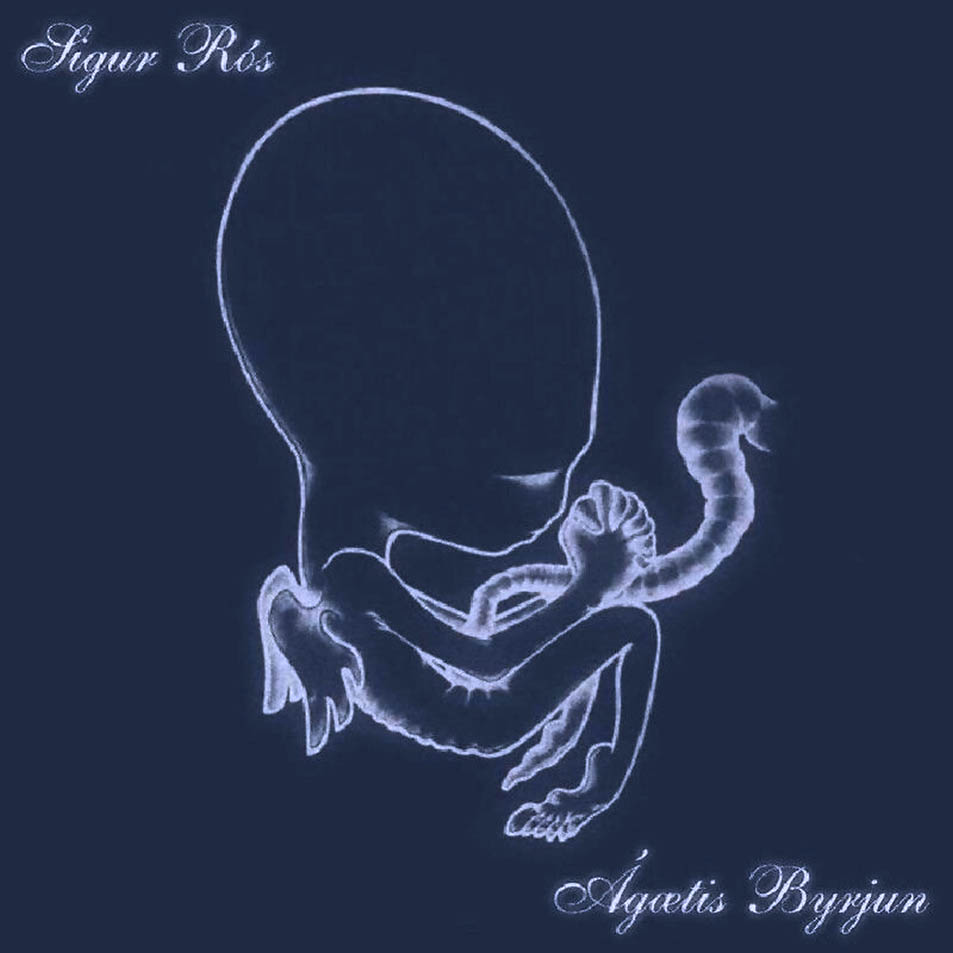
9. Sigur Rós – Ágætis Byrjun (1999)
Sigur Rós’ darkly chilly 1997 debut, Von, caused only a scant ripple beyond the group’s home country of Iceland upon its release. With its follow-up Ágætis Byrjun, their ambition grew decidedly larger, singer Jónsi Birgisson writing on the band’s website that “We are simply gonna change music forever, and the way people think about music.” A lofty goal, and one that the band by and large achieved by aiming for enormity without leaning on the staid rock tropes of volume and sharper dynamics. The otherworldly textures of their bowed guitars lend each dreamy track a haunting surrealism, bolstered by Birgisson’s uniquely high-pitched vocal presence, seemingly broadcast from another world. It’s music designed to evoke emotional responses rather than intellectual ones, and given the frequent occurrence of openly weeping attendees at their concerts, it succeeds wildly on that front. – Jeff Terich
Read More: Sigur Ros’ Ágætis Byrjun was a new beginning
Listen/Buy: Bandcamp | Amazon (vinyl)
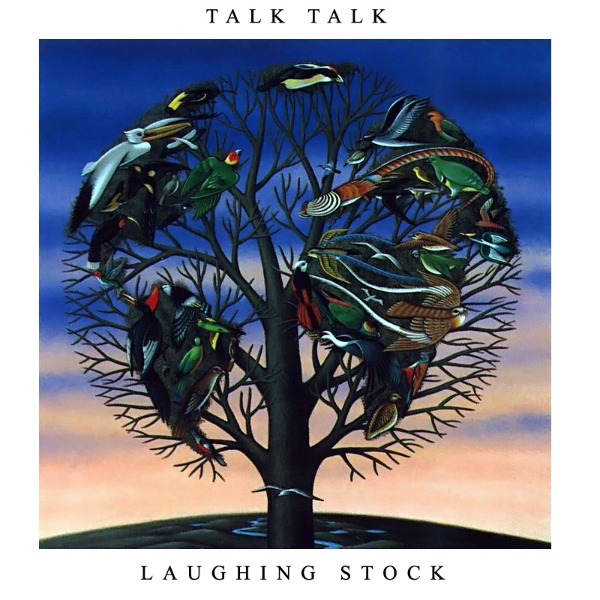
8. Talk Talk – Laughing Stock (1991)
Few bands have experienced quite as fascinating an arc as that of Talk Talk. Born as a new wave synth-pop group, the London group continuously added a new layer, while seemingly stripping out another every time they released an album, upping the ratio of ambition to expectations to the point that they scarcely resembled the band that once had a hit with the self-titled “Talk Talk.” Laughing Stock is leagues apart from that infectious pop gem, atmospheric and peculiar. Neither ambient music nor jazz, much of it is built upon a foundation of improvisation and a kind of misty amorphousness. A piece like “Myrrhman” is barely there, seemingly waking up from an ether to form the Big Bang of “Ascension Day,” the one, big rock(ish) song on the album, which at heart is just ever so slightly a rock album. Its longest track, “After the Flood,” contains all the possibilities that everything leading up to the album dared to suggest, succeeded only by leader Mark Hollis’ one solo recording. As an entity, Talk Talk ended with Laughing Stock, but the mystery of their music is one artists and listeners are still untangling. – Jeff Terich
Listen/Buy: Spotify | Amazon (vinyl)
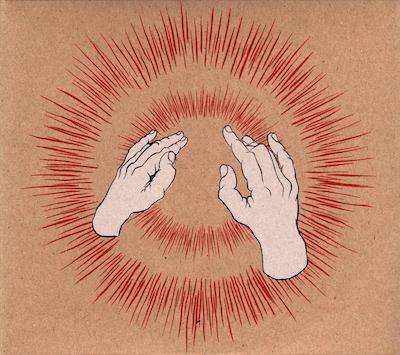
7. Godspeed You! Black Emperor – Lift Your Skinny Fists Like Antennas to Heaven (2000)
In 2000, three years after delivering their dark masterpiece of a debut, Godspeed You! Black Emperor left a heavy impression with its critically acclaimed, double-album follow-up, Lift Your Skinny Fists Like Antennas to Heaven. Eschewing conventional rock songwriting by doing away with lyrics altogether, GY!BE employed their then-unusual mixture of guitars, violin, and cello on each of its four lengthy tracks to create a mood that was by turns tense, mournful, and one of building to a tragic yet unavoidable outcome. – Greg Hyde
Listen/Buy: Bandcamp | Turntable Lab (vinyl)
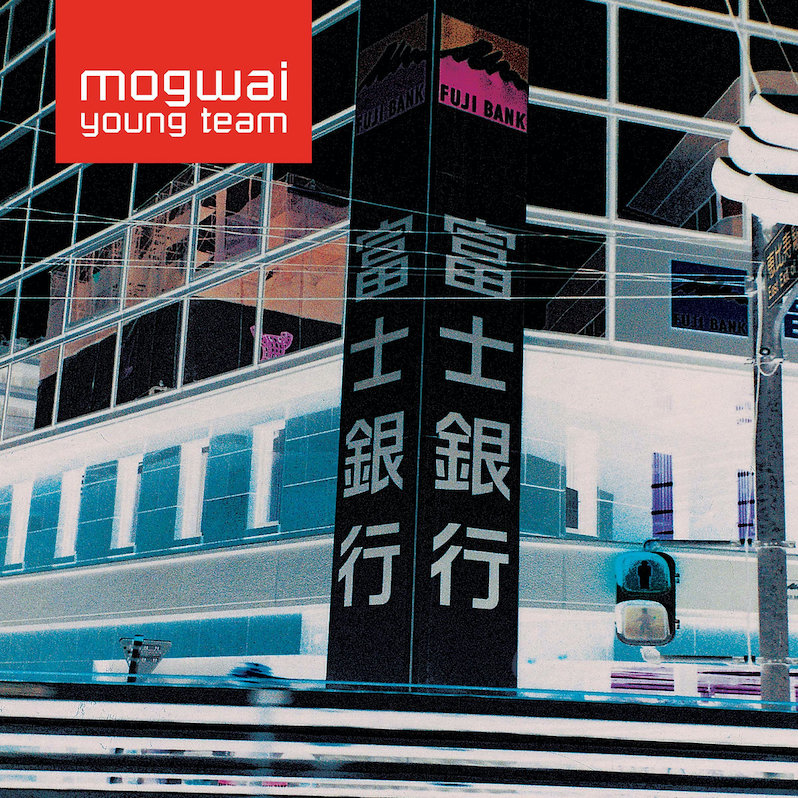
6. Mogwai – Young Team (1997)
Emerging onto a UK music scene that was, in 1997, still dominated by the dying embers of Britpop, Young Team felt refreshingly different and incongruous to the music everyone around them was making at that time. With just the barest smattering of vocals featuring during its 65-minute running time, tracks such as “Like Herod” and “Mogwai Fear Satan” were dominated by Stuart Braithwaite, John Cummings and Brendan O’Hare’s squalling guitar feedback, whilst tracks like “Radar Maker” and “Tracy” provided a melodic, pastoral counter-balance to those tendencies. Few post-rock albums released in the intervening 26 years have felt this iconoclastic. – Greg Hyde
Read More: Glorious Mistakes—An interview with Mogwai
Listen/Buy: Bandcamp | Turntable Lab (vinyl)
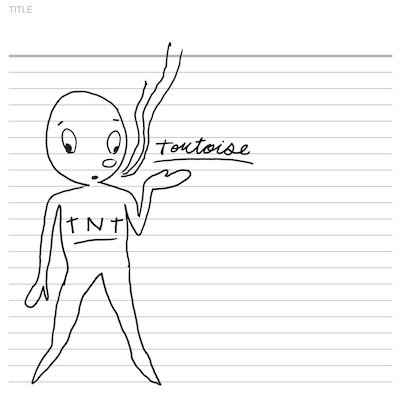
5. Tortoise – TNT (1998)
When discussing which post-rock album has the most sauce, there’s only one answer: Tortoise’s TNT. It’s far from the genre’s stereotypical serving as it lacks the traditional rising and falling structure and emotional swelling, instead pulling primarily from jazz and dub. It’s also the first Tortoise album to feature Jeff Parker and his contributions include a proud embrace of bass. As a result, TNT grooves and shimmies. It’s happy to dance among the interplay between Tortoise members that repurposes post-rock’s organicism into a more intimate affair between musicians. The stakes are low and comforting, slotting them in a class of their own in a sea of unbridled scope. – Colin Dempsey
Listen/Buy: Bandcamp | Turntable Lab (vinyl)
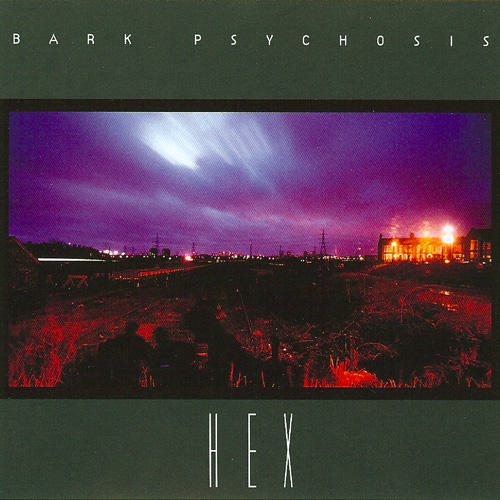
4. Bark Psychosis – Hex (1994)
Not necessarily the most famous document of early post-rock, perhaps, but crucial in terms of how we discuss it. It is with Bark Psychosis that the term “post-rock” is born, when Simon Reynolds used the phrase in his review of Hex for The Wire in 1994. In a technical sense that’s not entirely true; the phrase “post-rock” was used in an article about Todd Rundgren in the ’70s in Rolling Stone. All the same, this one stuck, making this entry a notable one as far as understanding the genre and how it got here. Hex is, compositionally, slightly more of a conventional rock album than its closest analogue, Talk Talk’s Laughing Stock. But it’s also texturally, timbrally nothing at all like a rock album. It exists in its own dark, yet spacious realm, opened up to gorgeous arrangements that carry a melancholy, sometimes sinister tone. There are elements dub and ambient coursing through these uneasy dirges, all of which comes together so beautifully that the explanation of why or how it does so is perhaps secondary to the effect of witnessing it happen. – Jeff Terich
Listen: Spotify
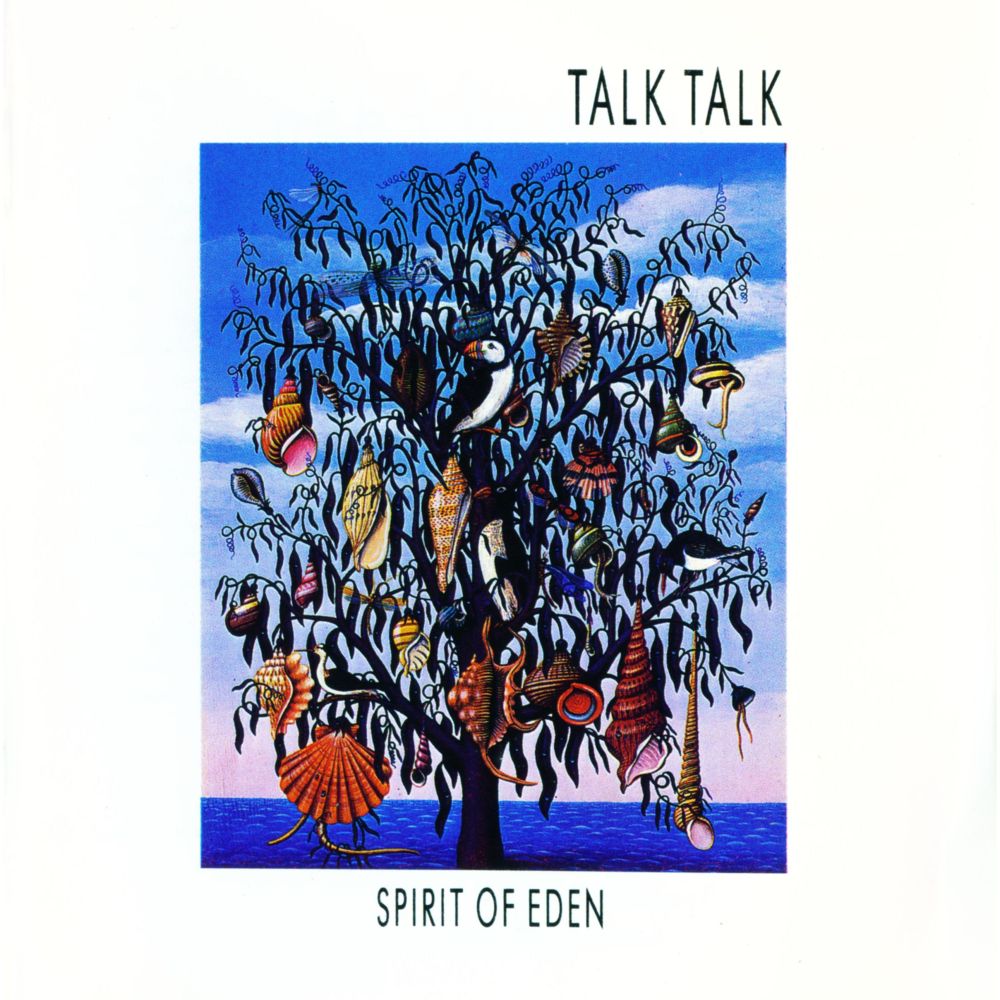
3. Talk Talk – Spirit of Eden (1988)
To hear Spirit of Eden is to hear post-rock in its youth, finding its footing and experimenting with who it is and what it likes, primarily without rhyme or reason. The album’s only logic lies in its circumstantial recording—in near-total darkness and almost completely improvised. It’s as if that was the only way Talk Talk could rise above rock music’s limitations. By stripping all form and expectations, Mark Hollis and Talk Talk reduced rock to pure emotional output, represented by the heavenly beauty of “I Believe in You,” the virility inherent to “Desire,” and the serenity of “Wealth.” It is not enough to commend Spirit of Eden for that as in the context of post-rock, it set the bar for how far outside the specter of rock one could tread and encouraged all post-rock artists to chase it. – Colin Dempsey
Read More: Treble 100—Talk Talk’s Spirit of Eden
Listen/Buy: Spotify | Amazon (vinyl)
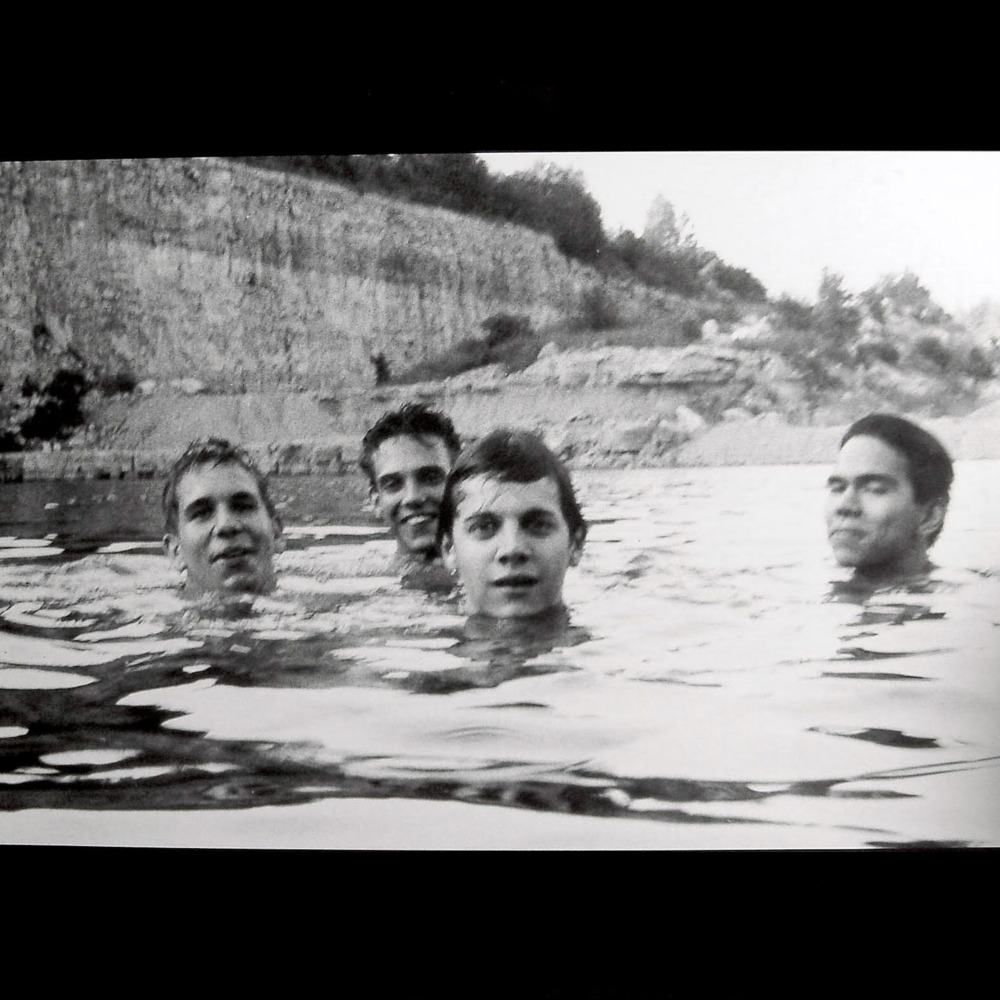
2. Slint – Spiderland (1991)
One of the greatest ideas of all time is: what if post-hardcore took lessons from Red, that brilliant King Crimson record? What if “Starless” was the basis for a post-Fugazi alternative rock record? It turns out the fruit of this is, more or less, the genesis of almost everything we consider post-rock now. It has, however, been a perpetual uphill battle to capture the same level of menace, the seething and addled utterly rancid vibes this record has. Some post-rock or punk records live in the realm of reasonable rage toward an unjust world: this is the rotten face of ugly people, ugly on the inside, like a Tom Waits or Nick Cave or Swans record utterly recontextualized. – Langdon Hickman
Read More: The haunting of Slint’s “Good Morning Captain”
Listen/Buy: Bandcamp | Turntable Lab (vinyl)
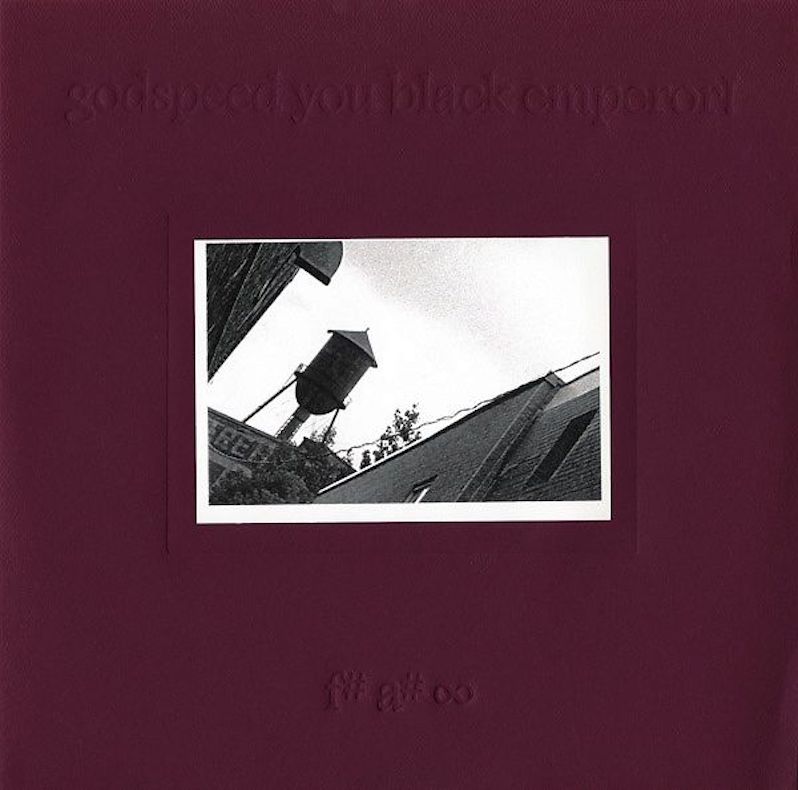
1. Godspeed You Black Emperor – F# A# ∞ (1997)
“The car’s on fire and there’s no driver at the wheel/And the sewers are all muddied with a thousand lonely suicides.” So opens the first of two 20-minute film scores in miniature that comprise the first album from Montreal’s mysterious, ambitious collective Godspeed You! Black Emperor. F# A# ∞, named for the alternating drones that end its first side in a closed runout groove loop, isn’t the band’s debut, technically—that wasn’t released until decades later, its shambolic sound collage deemed unfit for consumption by group leader Efrim Menuck at the time. It’s probably a good thing, too, given the level of mystique, awe and terror they harnessed on F# A# ∞. An instrumental soundtrack for apocalypse, pieced together with found sound, Morricone-esque melodic segments, unsettling film-script soliloquy and street-corner preachers, F# A# ∞ is masterful in its ability to capture something so masterful from overwhelming darkness. There are two specific compositions here, certainly, but within them there are entire narratives at play—dire warnings, ominous threats, crumbling landscapes and final kisses before the ground finally gives out. It’s at once too big and too intimate for rock music, a score for watching the horizon swallow you whole. – Jeff Terich
Read more: Godspeed You! Black Emperor’s F# A# ∞ made the apocalypse beautiful
Listen/Buy: Bandcamp | Turntable Lab (vinyl)
Treble is supported by its patrons. Become a member of our Patreon, get access to subscriber benefits, and help an independent media outlet continue delivering articles like these.


